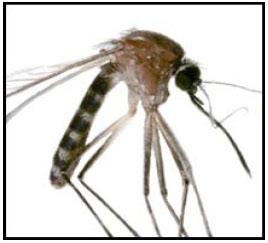Informing Environmental Disease Management Interventions in Torres Strait
Informing Environmental Disease Management Interventions in Torres Strait
 The Torres Strait is well known as a biological bridge, with many species moving between the islands and mainland Australia. Of global concern is the risk that emerging infectious diseases could have on human and wildlife health and that the Torres Strait could facilitate disease movement to the Australian mainland.
The Torres Strait is well known as a biological bridge, with many species moving between the islands and mainland Australia. Of global concern is the risk that emerging infectious diseases could have on human and wildlife health and that the Torres Strait could facilitate disease movement to the Australian mainland.
Tropical Ecosystems Hub researchers are working to improve methods of detecting and monitoring disease that will result in increased capacity to protect Torres Strait biodiversity and people from disease.
The team from Project 11.2: Improved Approaches for Detection of Disease and Prevention of Spread in Torres Strait are improving our understanding of the distribution of disease vectors across the Torres Strait and developing new surveillance methods for detecting disease vectors.
The challenge of managing disease outbreaks in frontier regions is early detection of new vectors and diseases, but the isolated nature of these remote regions is that standard surveillance approaches are not appropriate. Standard sampling of vectors requires vector-attractants are unavailable or difficult to transport, without great expense.
The project team trialed both a passive mosquito trap design that does not require batteries and a vector attractant that produces CO2 from yeast and sugar. The novel sampling method whilst capturing fewer mosquitoes than the standard traps and dry ice attractants, did capture the same types of mosquito species which importantly reveals what disease vectors are common in the landscape. Further, the new sampling method was found to be more robust and efficient in remote locations compared to standard BG traps capturing up to 14 times more mosquitoes in forest habitats.
Twenty species of mosquitos were identified from the 4,655 individuals captured across four islands in the Torres Strait: Saibai, Boigu, Kubin and Badu. In total, five times more mosquitoes were recorded in forest habitats compared to villages, with Saibai and Boigu Islands recording 4-5 times more mosquitoes than Kubin and Badu Islands during the sampling period.
With respect to the disease-vectoring potential of the sampled mosquitoes, the malaria-vector Anopheles spp. was recorded only on Saibia and Boigu islands, with proportional high numbers (45% of Boigu total) on Boigu during the sampling period. Dengue vector Aedes albopictus was recorded in all sampled villages and in the forest of Badu. The other dengue vector Aedes aegypti was only recorded on Boigu Island.
Information from the project will assist Biosecurity Queensland and the Australian Quarantine Inspection Service in devising environmental disease management interventions in Torres Strait. The project also serves to inform communities in Torres Strait of the diseases that can be transmitted by mosquitos.



